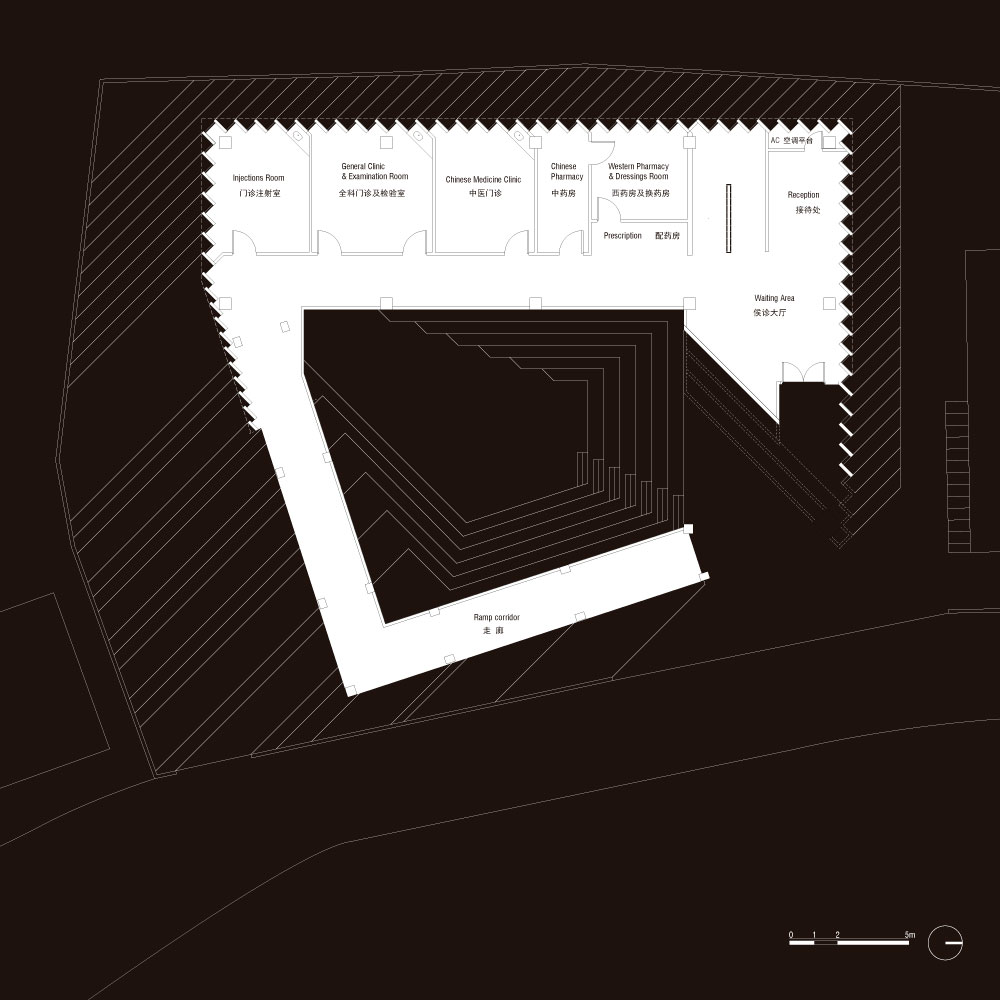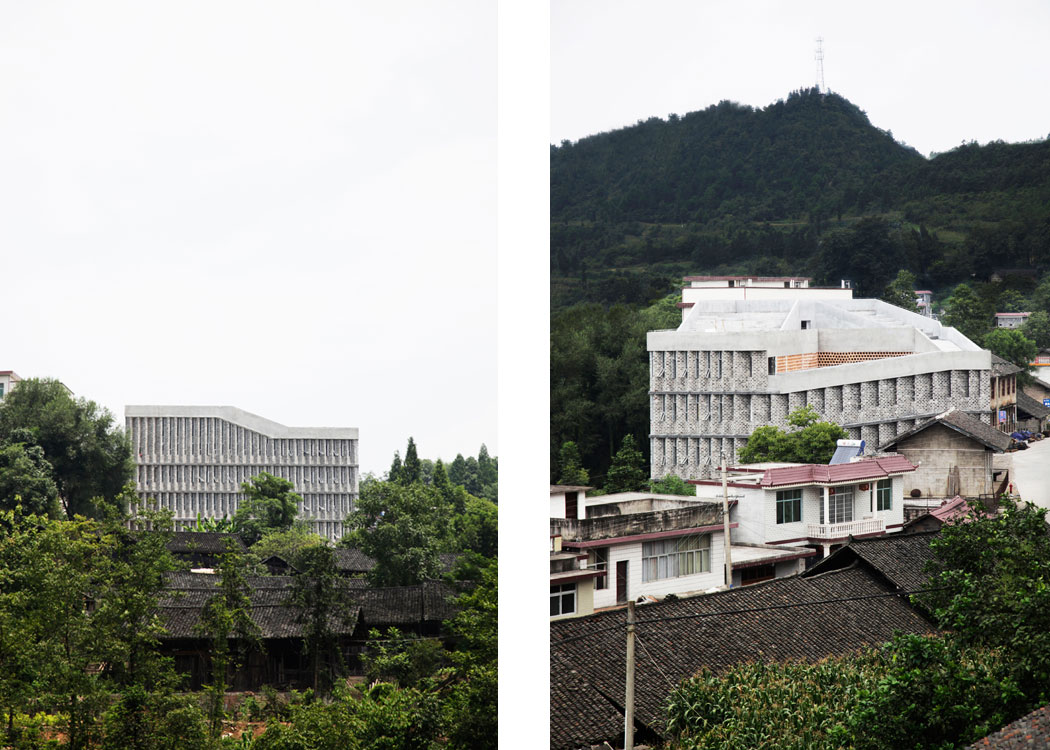Throughout China the urbanization process in developing areas has led to vast amounts of construction of generic building types using standardized materials. The majority of these buildings are concrete frame structures with brick infill, clad in ceramic tiles. Houses are three to four story often with a cantilevered first floor, with flat roofs that are used for drying clothes or food. Institutions such as schools or hospitals are also standardized slab blocks, single loaded with corridor access. Variation in these typologies is slight and occurs predominantly through tiling patterns or the introduction of balcony spaces.
Alongside this construction process is the simultaneous demolition of old fabric, deemed unsuitable, in China’s era of modernization, by government bureaus and villagers alike. In this process many vernacular buildings that use traditional materials such as mud bricks, grey bricks and clay tiles are destroyed and often lie piled up by the roadside.
Rather than reverting to a nostalgia for lost craftsmanship or for a “Chinese” architectural identity, our approach is to accept modernization yet integrate techniques and material strategies that register this as a process of continuity rather than as a schism. The Angdong Hospital Project challenges the generic architecture of the institution through programmatic and material innovation.
Program Innovation
Rural healthcare in China currently faces a multitude of challenges. Rural institutions are generally unfavourable compared to those in urban locales. Government subsidies and the raising of doctor and hospital incomes also lead to overcharging and needless treatments and exams. Commissioned by a Hong Kong charity – the Institute for Integrated Rural Development – and working closely with the local health bureau, our task was to develop a model rural healthcare building capable of supporting the many progressive reforms on rural hospital management and care giving. This includes providing basic necessities absent in current establishments, some as simple as waiting rooms and offering both traditional Chinese together with western medicine. Additionally, seeing that most institutions in China, are gated and privatized, we were interested in introducing the hospital as a public building in the heart of the village.
Site Plan
Plan
Section
The form of the hospital was generated in response to the need to have an accessible ramp to all floors of the hospital. The phasing strategy proposed that the existing hospital be kept in use until the new building had been built, and then be demolished and the ramp inserted as the last component to connect all the floors. This ramp wraps an inner courtyard forming a public space leading to the roof. This ramp and rooftop is publicly accessible serving as a common meeting space and play space for children. At the ground level, the courtyard provides folds into the natural slope creating additional steps for seating as an outdoor waiting area.
Material Innovation
The Angdong Hospital innovated directly in the construction process of a generic material to create variation and specificity. We took on the typical concrete screen block ubiquitous across China that comprises of a square block with circular void in the middle. We developed a flexible casting mould that could vary the orientation, and distance of extrusion or intrusion of this aperture. Through experimentation, we selected three types for their filtration effect and viewing direction. Having developed and cast these prototypes in Hong Kong, these were taken to the fabricator – a local villager in Angdong – as the positives from which fibreglass moulds were made for mass production.
Additionally, a Hong Kong manufacturer donated concrete dye to alter the concrete into a warm terracotta colour.
The exterior envelope was constructed from discarded grey bricks, made available through the recent demolition of a brick factory, arranged in fins placed at a 45 degree angle so that from some viewpoints the buildings appears as a solid mass and from others the interior is revealed. In contrast, the deployment of the screen blocks on the inner, courtyard façade created a softer, variegated surface filtering light and offering different vistas as one traverses the ramp.
The Angdong Hospital exemplifies are work to challenge generic forms and material applications. Through tactics of programmatic organization; reuse of materials; and invention we aim to create unique public buildings in rural China.
































